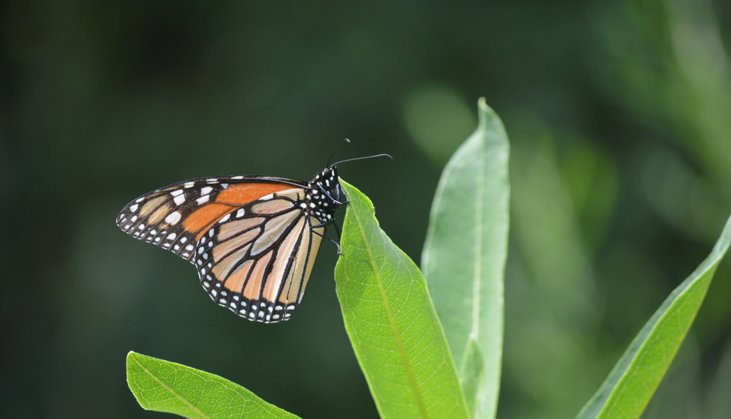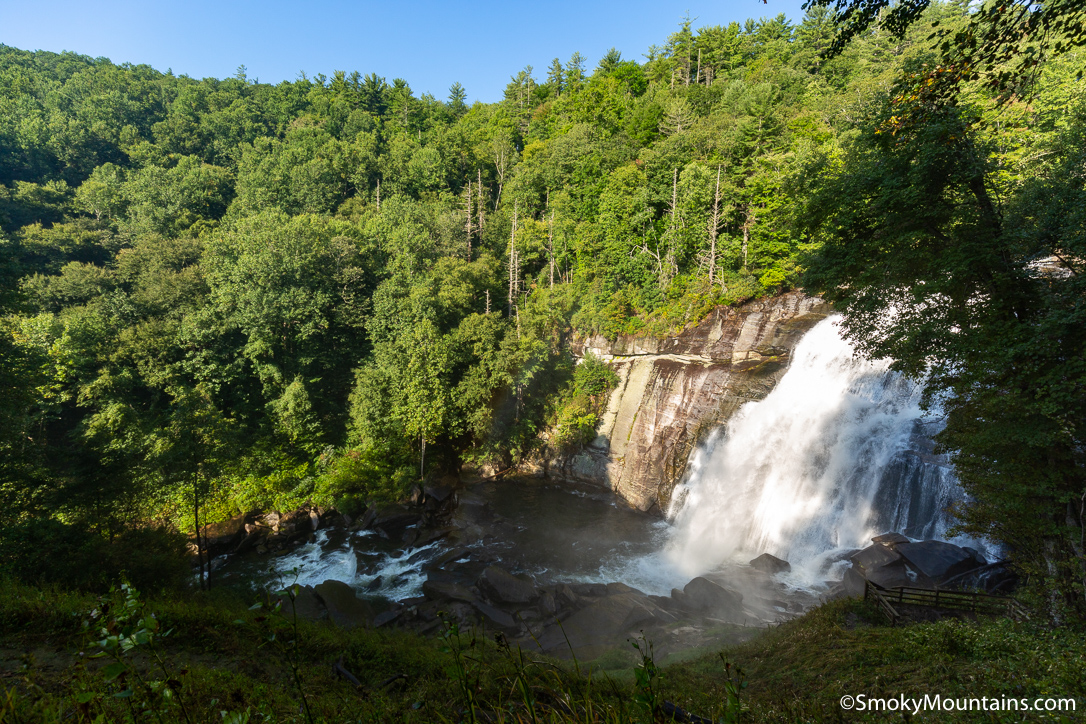Nestled as it is amid the highest mountains in the eastern U.S. and some of the world’s most biologically diverse temperate forests, Asheville’s got no shortage of amazing natural phenomena. From wildflower blooms to fall colors, some of those phenomena get an extra-special boost from their fleetingness: seasonal touchstones that help define the area’s wild calendar. Easily one of the most magical of those seasonal happenings is the annual fall migration of the monarch butterfly, a real bucket-list event to observe!
Read on for a little background on the monarch’s mighty journey as well as some tips on seeing it for yourself.
Major Monarch Mileage
One of the biggest and flashiest butterflies native to North America, monarchs are also unusual for undertaking long-distance seasonal migrations. Northern populations of monarchs can’t survive the winter at higher latitudes, and thus beeline for balmier refuges when the days start shortening and the temperatures start falling. In the East, most monarchs flap and flutter their way to the Sierra Madre of central Mexico for the winter, which for some means a journey on the order of 3,000 miles. The monarchs of western North America, meanwhile, primarily overwinter on the coast of California.
The Eastern monarchs that travel to Mexico are part of a “migratory generation” with a much longer lifespan—upwards of nine months—than those hatched earlier in the summer. These migratory monarchs pack on fat reserves to help them undertake their enormous flight. Though these butterflies have never been to Mexico, they somehow know the way. We don’t exactly know how monarchs navigate, though it’s thought they at least partly orient themselves based on the position of the sun.
While a single monarch generation makes the southbound flight in fall, the spring journey back north is accomplished in staggered fashion by several generations.
Wintering Grounds
Huge numbers of monarchs from eastern North America congregate in a relatively small number of wintering sites in the Sierra Madre. These winter digs are situated in fairly high-elevation mountain forests of oyamel (or sacred) fir, favored by the butterflies for their mild temperatures and high humidity.
Rate of Migration
Monarchs flying south fly at about seven miles per hour, and often cover 50 to 100 miles per day. (According to the U.S. Forest Service, the greatest single-day distance recorded by a monarch was a mighty impressive 265 miles!) Along the way, the butterflies roost together at night in areas well stocked with nectar sources and protected from bad weather.
Monarch Flyways
Eastern monarchs follow a number of major flyways on their fall migration that converge in Texas to funnel the butterflies into Mexico. The conveniently north-south ridges of the Appalachians serve as their own migration corridors, including the Blue Ridge heights around Asheville.
Butterflies on the Blue Ridge Parkway
The Blue Ridge Parkway is an excellent place to look for migrating monarchs in the fall. The prime window for seeing these dainty-but-tough wayfarers is mid-September through early October.
Open ridgetop areas with flower meadows and long sightlines offer the most auspicious monarch-viewing opportunities. Good spots along the Parkway within easy reach of Asheville include:
- Wagon Road Gap (M.P. 412.2)
- Double Top Mountain Overlook (435.3)
- Cherry Cove Overlook (M.P. 415.7)
- Waterrock Knob (M.P. 451.2)
- Black Balsam Knob (M.P. 420.2)
Another reason to scout for migrating monarchs up on the Blue Ridge Parkway this time of year? You’ll also get to enjoy the region’s outstanding fall foliage!
Monarch Butterfly Day at the North Carolina Arboretum
When you’re not up on the Blue Ridge Parkway looking for waves of traveling and foraging butterflies, celebrate the migration at the North Carolina Arboretum, which each year hosts a Monarch Butterfly Day. Here you can find milkweed plants—the prime food for monarch larvae—for sale, watch monarchs being released, and enjoy various butterfly-themed craft activities.
Experience the Annual Fall Migration of the Monarch Butterfly in Asheville
Even on paper, the migration of the North American monarch butterfly is mind-boggling for its extent, for its consistency, and for the still-mysterious mechanisms behind it. It’s all the more amazing to contemplate when you’re actually watching some of the gorgeous insects execute the epic journey—especially when you’ve got a grand, fall-colored Blue Ridge backdrop for it!




